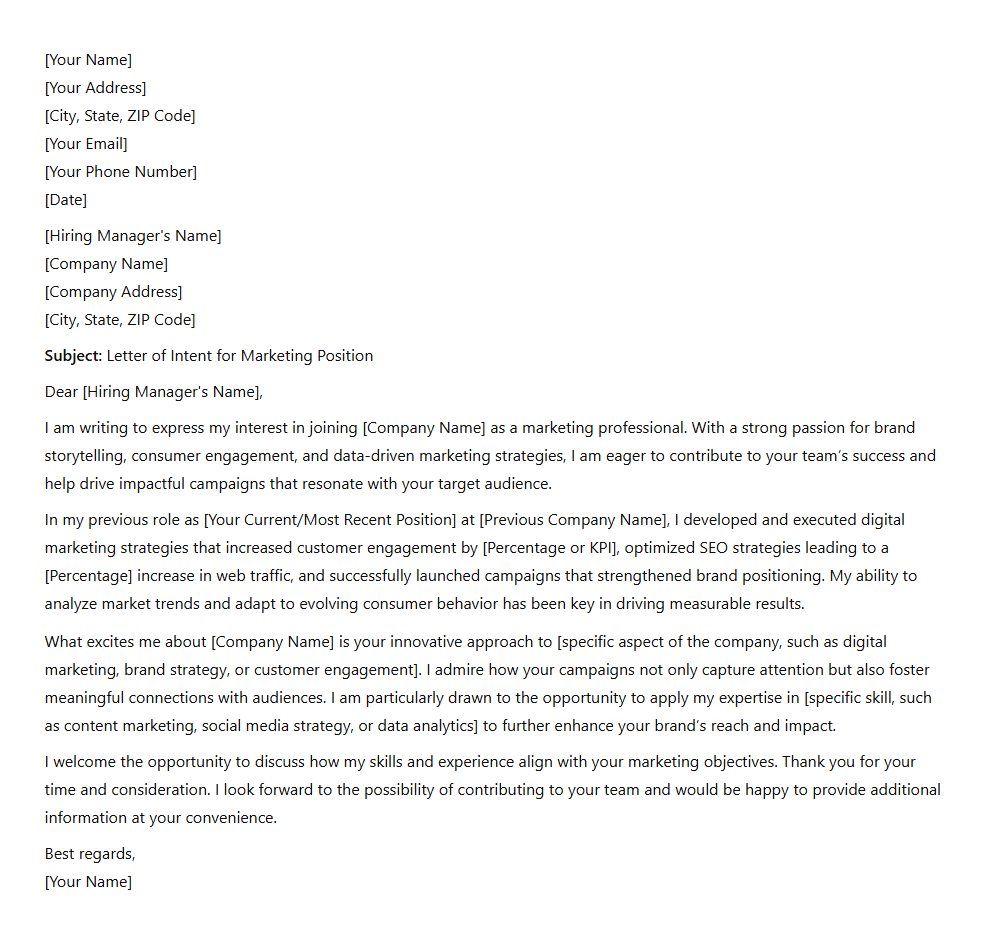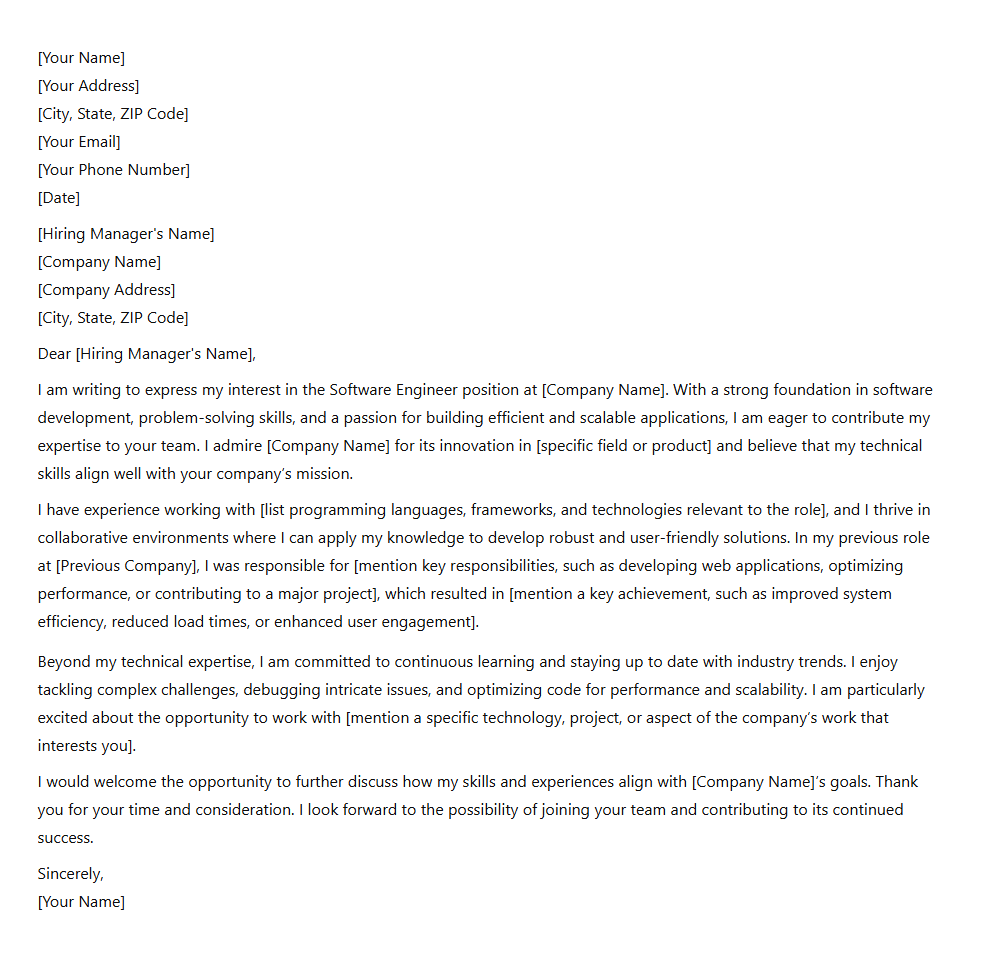What Is a Letter of Intent? A Clear Guide for Applicants

Image: https://pixabay.com/photos/laptop-office-hand-writing-3196481/
Before applying for a program or position, it’s important to understand what is a letter of intent and why organizations request it. Based on extensive experience in application review, I’ll show you how a well-written letter can strengthen your candidacy. A statement of intent is a written document that outlines the agreement between the two parties before formalizing the legal agreement. Such letters are used in various situations. For example, a tenant and landlord can sign LOI once they have mutually agreed on the regulations and terms of tenancy. So, what is a LOI? Now you have a clearer answer!
In job search, this type of letter shows your interest in a particular company. In it, you outline why you'd like to work for a particular company and how you can contribute to the organization's success. A letter helps you initiate the conversation with a prospective employer and wonder about potential opportunities. A well-written letter of interest can help you start the conversation with a potential employer and potentially unlock hidden job opportunities.
Keep reading to learn about the peculiarities of LOI, how it is used, and how to craft an effective letter to land a job with your dream company. By the end of this article you will have a full understanding of LOI meaning!
What Is a Letter of Intent for a Job?
A letter of intent (LOI) is a non-binding document that outlines the understanding between two or more parties involved in a proposed transaction. The primary purpose of an LOI is to establish a framework for further negotiation and to demonstrate a commitment to a potential deal. It serves as a preliminary agreement that sets the stage for further discussions with the other party.
An intention letter for a job is a proactive document expressing your interest in working for a company even without a specific job opening. Writing an effective LOI for a job application can open unexpected career opportunities.
LOIs are used in various business transactions, such as mergers and acquisitions, joint ventures, and property lease agreements. By clearly outlining the essential details, intentions, and definitive agreements, an LOI helps to ensure that the two parties are on the same page before they close a business deal.
Why Send a Letter for Employment or Job Application?
Sending a LOI for work opportunities shows initiative and genuine interest in the company's mission and values.
In the job application context, you may send a LOI to express your interest in working for them, outline your skills and strengths, and wonder about potential opportunities. You can write such a letter in the following situations:
- Express your interest in the organization. If there is one or more companies that you'd like to work for, sending LOI is a great strategy to initiate the contact. Don't wait for a job posting to appear - use a proactive approach and show what you can offer.
- Reconnect with a recruiter.If you met the company's recruiter or the conference or industry event (or had a heated discussion with them in LinkedIn), initiate a second contact with LOI. Thus, you'll stay top of mind for them, which is super important if they're actively hiring.
- Show how you can contribute. Employers value passionate people who are willing to make an impact and solve business problems. By showing the potential employer how you can make a difference if hired, you'll get a chance to secure a dream job with them.
- When requested by employer. Some companies require an LOI instead of a cover letter. This is more common for startups or small organization who might not know what kind of employee they're looking for. If you show your passion for the organization's mission and outline your value, it may lead to employment.
Cover Letter vs of Intent: What's the Difference?
Don't confuse LOI with a cover letter. While both are used to show your interest in working for the organization and aren't legal documents, there are differences between them.
- A cover letter is more focused on the position. It outlines specific skills, education, achievements, and other relevant information that presents you as a perfect fit for the role. Say, when applying for a Senior Java Developer role, you focus more on what makes you a great person for this job. In LOI, you will write about why you are excited about working for a XYZ Company without having a specific job in mind.
- A cover letter is sent upon request. As a job seeker, you can send a cover letter with a resume in response to a job posting. As for LOI, you may send it even if no job is advertised.
Writing both types of letters can be confusing, especially if you are moving forward in your career after years with the same company. If you struggle to express your strengths on paper, our career writers can help. The experts of ResumePerk can write a tailored LOI that outlines your achievements and potential to help you get noticed by employers. Chat with us to claim your discount!
While both documents express interest in a position, a cover letter is typically targeted to a specific job opening, whereas LOI can be used proactively even when no job is advertised. Understanding the differences between a cover letter vs LOI helps you choose the right tool for your career goals.
When Should You Use A Letter of Intent?
LOI has various applications in business transactions, making it a versatile tool for outlining preliminary agreements. Here are some common scenarios where an LOI is used:
- Mergers and Acquisitions: An LOI is often used to outline the terms of a proposed merger or acquisition. This includes details such as the purchase price, payment terms, and due diligence requirements.
- Joint Ventures: When two or more parties intend to form a joint venture, an LOI can help establish the terms of the agreement. An LOI ensures that all parties agree on the basic terms before committing to a binding agreement.
- Real Property Lease Agreements: In the context of leasing real property, an LOI can outline the terms of the proposed lease agreement. This includes the rent, lease term, and renewal options.
- Employment Agreements:An LOI can also be used to outline the proposed terms of employment. This includes details such as job title, salary, benefits, and job responsibilities. An LOI helps to ensure the preliminary commitment to the agreement and outlines fundamental terms for a mutual understanding of the job offer.
How to Write an Effective LOI?
Format and Structure Guide
Your loi should follow a clean, formal structure. Here's a statement of intent template and formatting guide to help:
- Salutation: Address the hiring manager directly. Unsure what 'salutation' means on job applications? It's your formal greeting, like 'Dear Hiring Manager'.
- Opening paragraph: Clearly state your intent and why you're writing.
- Main body: Outline your background, interest in the company, and key skills.
- Closing: Include a call to action and thank them for consideration.
Use consistent formatting: left-aligned text, professional font (e.g., Arial or Times New Roman), and 10-12 pt size. Here's a downloadable LOI format for job applications
The structure of LOI is similar to that of a cover email, but there are differences in content you will need to include. Here is how to craft a letter that will attract the attention of potential employers:
Research the Organization
Before you start writing the letter, do your homework and research the target company or organization. What is their mission and values? What makes the company unique? What is their corporate culture and the most successful recent projects? Study their website, social media, reporting, and news to answer these questions.
Think about their current challenges and goals to better understand how you can be valuable to the organization. Pay attention to their tone of voice if the company uses formal language in all communications, adjust your language accordingly.
Show What You Can Contribute
In the first paragraph of your letter, express your interest in joining the organization. Be very specific about why they will benefit from hiring you. For example, if you want to work as their social media manager and you see that their current SMM strategy could be improved, share your ideas about how you would increase the company's visibility across multiple channels.
All companies value highly motivated candidates. Even if there are no open jobs at the moment, if you are persuasive enough, there is every chance that they will contact you once the job opening appears or even create a job for you.
Highlight Relevant Skills and Competencies
Briefly outline your relevant experience, successes, and education. Since it is not a cover letter, you needn't be very detailed about them. Two or three sentences describing where you previously worked and your key responsibilities/achievements would be enough.
Keep It Brief
Ideally, you should keep your letter between 3 and 5 paragraphs. Remember that the company probably has no open jobs for candidates with your skills, so they are not ready to read lengthy letters. Be brief and up to the point. Describe what skills you have and how the organization will benefit from having you onboard.
Proofread Before Sending
Your LOI should make the perfect impression in seconds. Don't let mistakes, typos, or poor grammar ruin that impression. Proofread your letter carefully before sending it to avoid occasional mistakes.
Common Mistakes To Avoid
While writing LOI, it is very important to avoid certain mistakes that instantly decrease the value of your letter. Be sure to avoid them in your LOI!
Being Too Vague
You should avoid the situation when your LOI does not clearly state your goals or desires. You do not want to keep the readers wondering about the purpose of your letter. The reader should immediately understand your point. Be very specific and to the point!
Rewriting Your Resume
Your LOI is not the same as your resume. It is a huge mistake to repeat the information that is already stated in your resume. You can mention some experience, but the main focus should be on motivation, plans, and other issues that are personal to you. Tell your story in an exciting way!
Lack of Personalization
It is another huge mistake to use the same LOI over and over again. You need to personalize it for every new position or situation. Moreover, you should address it to the specific person. Otherwise, the generic LOI is trashed without being read. It is your task to make it meaningful!
Overly Formal or Robotic Tone
LOI should be formal, but you should try to avoid making it too dry. The use of generic phrases or complex phrases is not a good idea. Use your own voice, and do not be afraid to sound too conversational in your writing. That is exactly what LOI is written for!
How to Structure a Letter of Intent for Employment
Your LOI should be logically structured and include all the essential information for the employer. Here are the essential sections that you need to include:
- A professional salutation. Use a professional salutation and address the recruiter by name, for example, "Dear Ms. Finnegan". Avoid unprofessional or generic greetings, such as "Hi" or "To whom it may concern".
- Letter introduction. In the first paragraph, include the background information about who you are and why you're contacting them. Usually, job-seekers express their interest in working for the organization and the top 2-3 skills they want to contribute.
- Body of the LOI. In 2-3 paragraphs, outline why you'd like to work for the company. Mention specific things that inspire you most, for example, their mission, their innovative approach, or else. Next, focus on your skills, competencies, and experience that can be valuable for the company. Since there is not a particular job advertised, you can be brief and include your strengths from the entire course of career.
- Conclusion. In the end, thank the recruiter for their time and consideration. Include a call to action to catch their attention.
- Professional sign-off. Use a sign-off like "Sincerely" or "Best regards" and your full name.
A well-structured LOI for employment should clearly highlight your career goals, relevant achievements, and enthusiasm for contributing to the company.
LOI Examples for Work and Employment
Review the following examples of letters of intent to get a visual picture of the appropriate structure and format. You will also learn more about the effective use of language and proper tone. These examples will help you avoid common mistakes as well as gain inspiration for writing your own LOI.
Example for a Marketing Job

Example for a Software Engineer Role

Letter of Intent Template
Download a Free LOITemplate
Need to write your LOI right now but have no time to review all the examples? Here are the links to the free templates.
Special Use Cases
Letters of intent can serve different purposes beyond standard job applications. Below are some common scenarios where you might need to adapt your LOI format or intent:
LOI to relocate
If you're planning to move, explain your reason for relocation and emphasize your long-term commitment to the new location. Here's LOI to relocate for a job
LOI for internship
For students or early-career professionals, this sample focuses on your motivation, education, and what you hope to gain from the experience.
Construction LOI example
In the construction industry, LOIs are used to outline preliminary agreements before formal contracts. A construction sample should highlight scope, timelines, and intent to formalize.
Get Professional Help with Your Letter of Interest
If you want to write LOI for a specific company or edit the one you've written, our experts can help. With 10+ years of experience in writing resumes, cover letters, and other job application documents, we will help you create a memorable letter that attracts attention. Contact us today - discounts for resume packages are available!
Author: Editorial Team at ResumePerk.com
Reviewed by: Certified Career Expert
Last updated: November 2025
Recommended reading:
- 12 Common Cover Letter Don'ts Everyone Should Know
- How To Write An Email To Get A Job ?



